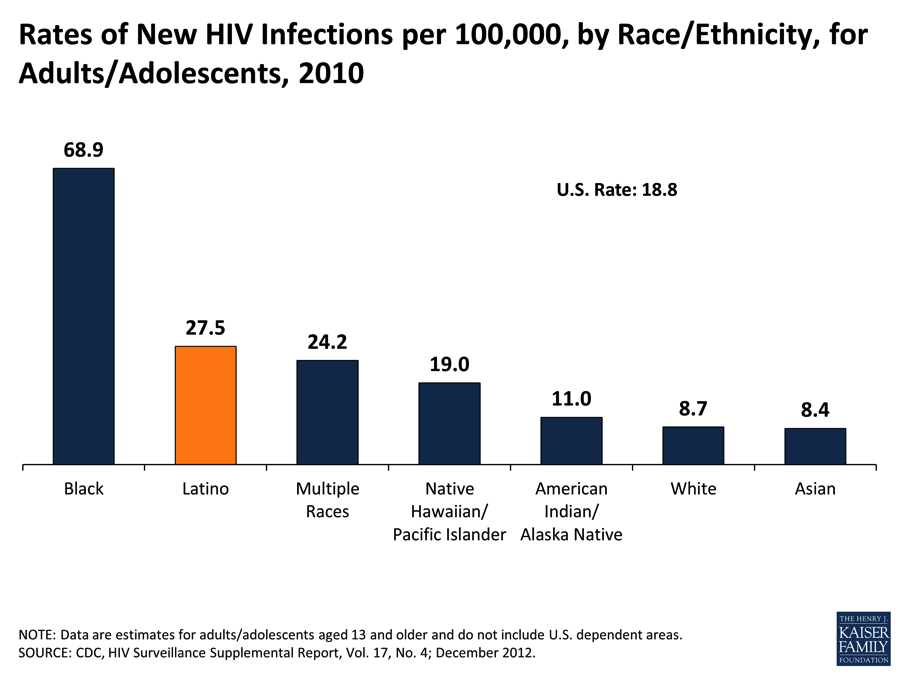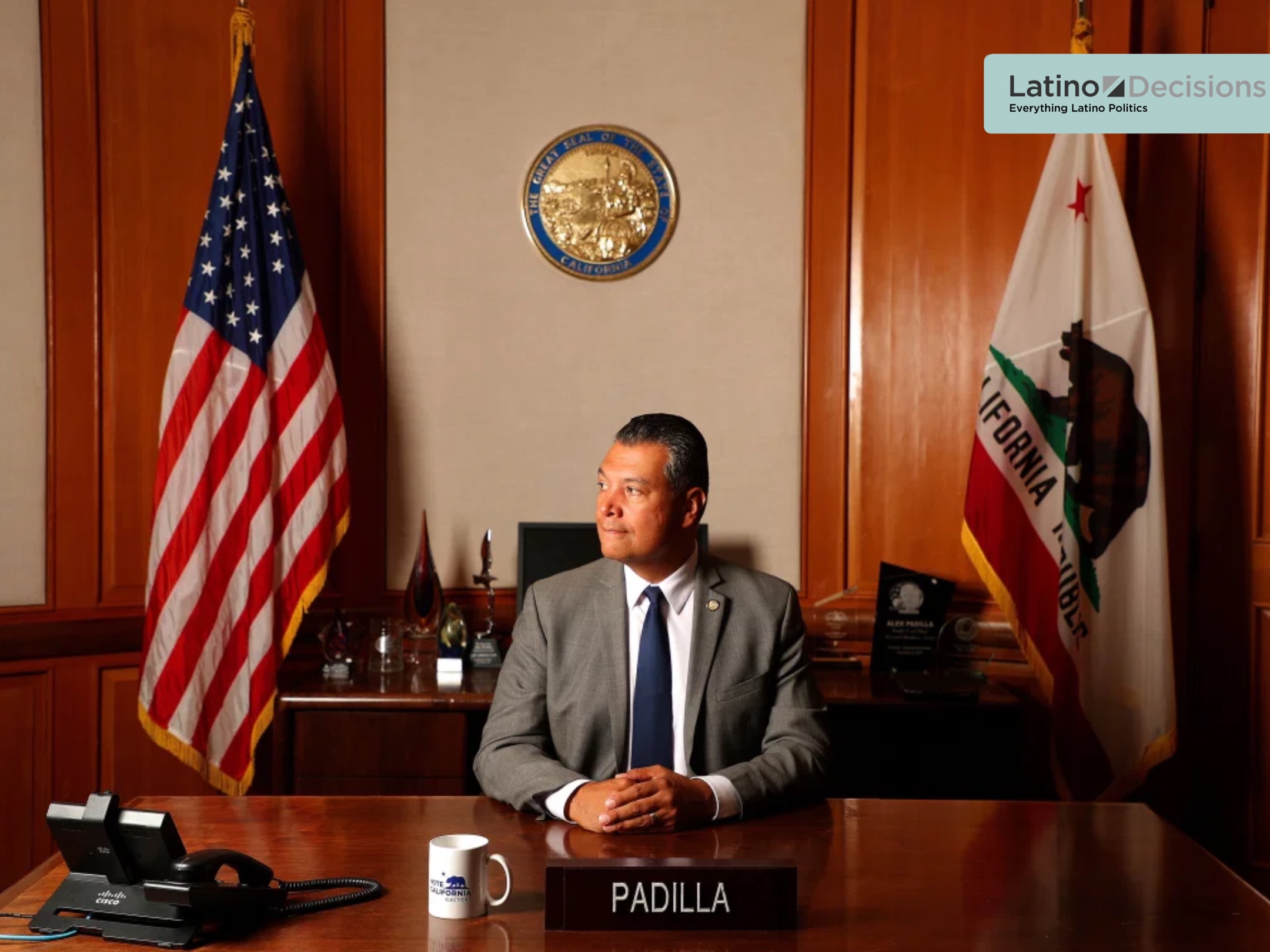Efforts to combat the HIV/AIDS epidemic that began in the 1980s have achieved significant advancements that now make it possible for someone with HIV to live a full life. However, today the disease is still highly concentrated in specific communities, so now it is important that we tailor our efforts in order to be the most effective. HIV/AIDS disproportionately affects the Latino community, particularly among men who have sex with men (MSM) and men who have sex with men and women (MSMW). Among Latino men in 2010, 79% of new HIV infections were attributed to MSM contact, and 28% of those were in men under the age of 24, according to the CDC. Although Hispanics are less than 17% of the U.S. population, they accounted for 22% of all new HIV infections in the U.S. in 2011, an infection rate three times that of Whites (See Figure Below to compare infection rates of Latinos with other ethnicities). Alarmingly, 1 in 36 Latino men and 1 in 106 Latina women will be diagnosed with HIV at some point in their lives.

Why does this disparity exist? Much debate surrounds this topic, and it is likely a combination of factors. Many Latinos have to deal with racial discrimination, language barriers, and a high rate of poverty, and undocumented Latinos may fear having to disclose their immigration status in order to get tested or receive treatment. As an over-the-counter test for HIV is now available at most drug stores, it is not necessary to disclose. Additionally, there are many community health centers that provide free HIV testing, and they will not ask for immigration status. A higher rate of poverty in the Latino community leads to limited access to healthcare, and therefore causes them to be less likely to receive treatment or testing. Even though free and cheap options are available for testing, some impoverished Latinos may not be aware of these or have transportation to access them. Lastly, one of the biggest barriers to HIV testing for Latinos is the cultural stigma surrounding homosexuality and bisexuality.
In order to address some of these issues, the Obama administration came out with the National HIV/AIDS Strategy (NHAS) in 2010, where they committed to making real efforts to improve the situation of disproportionately affected communities, including Latinos. They point out that previous efforts had been badly focused, giving the highest proportion of funding to states with the lowest rates of HIV/AIDS. The three primary goals of the NHAS include reducing the number of infections, increasing access to care and testing, and reducing HIV-related health disparities, such as lack of housing, in affected communities.
Since the release of the NHAS, there has been significant progress towards achieving these goals. In recent years, the CDC has launched several Latino-directed campaigns that help raise awareness about HIV/AIDS and encourage testing. The Reasons/Razones bilingual campaign is the CDC’s first national campaign to promote testing among Latino gay and bisexual men. They also launched a Spanish version of their campaign Let’s Stop HIV Together—Detengamos juntos el VIH—to increase the impact among Latinos.
In January 2014, the CDC released a report detailing their efforts to improve HIV surveillance and HIV prevention and intervention in the Latino community. Some of their recommendations for surveillance among Latino migrant populations include adopting a uniform definition of “migrant;” enhancing reporting in the area; implementing HIV interventions that are evidence-based, scalable, and culturally and linguistically appropriate; and increasing collaboration with health care providers and community-based organizations serving Latino migrants.[1] According to the report, the CDC has already made a concerted effort to implement these strategies. For example, in 2011, the CDC awarded $55 million to 34 community-based organizations to focus HIV prevention services for LGBT people of color. Then, in 2012, the CDC allocated $339 million to state health departments to fund Core Prevention Programs, expanded HIV testing, and innovative projects leading to new prevention strategies.[2]
Additionally, the Obama administration has reported that the Budget for fiscal year 2015 invests a large amount of money in HIV/AIDS programs, particularly focusing on disproportionately affected populations. The Budget invests $2.3 billion in the Ryan White HIV/AIDS Program, including significant funds to ensure that people living with the disease have access to medications. It also includes $1.1 billion for CDC programs, and requires public health departments to target resources for the most HIV-concentrated areas. Lastly, the Budget provides $332 million for HUD’s Housing Opportunities for Persons with AIDS (HOPWA), having determined that lack of housing is one of the biggest barriers to health care, especially within ethnic minorities.
Progress has certainly been made towards addressing the HIV/AIDS needs in the Latino community, and if the government continues to be committed to the cause, there is hope for real improvement. However, one area that isn’t addressed at all in the national strategy is improving sexual education in communities that are at the highest risk. In addition to providing information on HIV/AIDS, sex education should discuss sexual identity and orientation to help reduce stigma. As gay and bisexual youth are at the highest risk for HIV among Latinos, it stands to reason that improving their access to information at a young age would help in their development. Although many battles against HIV/AIDS have been won since the 1980s, the war is not over, and the government, together with local organizations, should continue to address the concentrated risk in the Latino community.
Leslie Sherman, Until There’s A Cure Foundation
The commentary of this article reflects the views of the author and do not necessarily reflect the views of Latino Decisions. Latino Decisions and Pacific Market Research, LLC make no representations about the accuracy of the content of the article.
[1]Improving HIV Surveillance and Prevention Intervention Efforts Among Hispanic or Latino Migrant Communities in United States-Mexico Border States: Arizona, California, New Mexico and Texas, p. 12.
[2] Improving HIV Surveillance and Prevention Intervention Efforts Among Hispanic or Latino Migrant Communities in United States-Mexico Border States: Arizona, California, New Mexico and Texas, p. 38.


